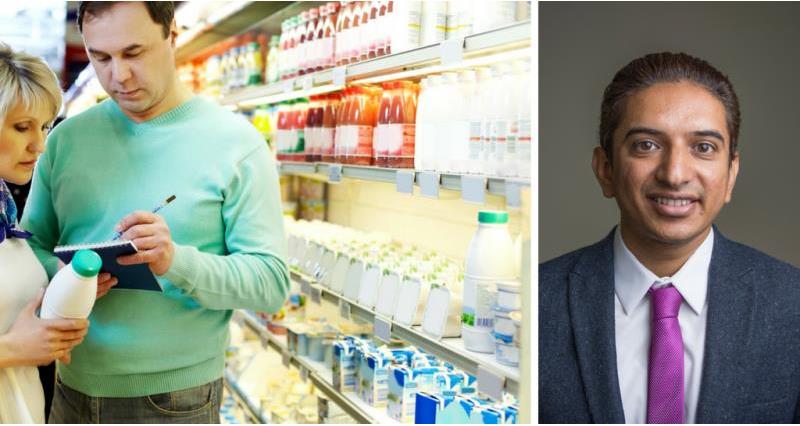Recent days have seen food prices again come under the media spotlight. The debate has, unfortunately, failed to recognise the complexity of the issues and adopted, in some cases, a somewhat simplistic analysis.
The impacts of the dry and hot weather have been hugely challenging for many farmers across the country, with many not seeing such weather in their lifetimes. At the same time, British food production has been pulled into sharp focus.
See also: Our dry weather toolbox for farmers
Any headlines around rising food prices and cost of living need to be put in historical context.
Food is more affordable than ever - as a result of the rise in average incomes and of the availability of ever-cheaper food, people have never spent less on food: the average British family spend on food and drink has fallen from 30% in 1950s to less than 10% today.
In fact, in the UK - food costs as a proportion of household income is amongst the lowest in the world, behind only the United States and Singapore. The average shopper in Nigeria by contrast, spends over half their income on food.
Farmers know all too well that, despite being part of the same supply chain, increases in retail prices and/or in wholesale prices do not necessarily result in an increase in the prices paid to farmers. For any commodity, a combination of factors will influence prices. Transport, energy, labour, and packaging are all key cost areas for the UK food industry.
A further key factor in pricing levels is the margin taken by the supply chain, and recent years have seen the retail sector increase its margins on some products, while the farmgate share has fluctuated wildly, but rarely makes up more than 60% of retail price in goods such as beef and lamb.
The UK is overall around 60% self-sufficient in the food it consumes, which is in part due to consumer appetite for goods that can’t be grown in this country because of the climate. We use the international market for our food supplies.
It is also important to remember that in a global market supply/demand balance dictates agricultural prices. To what extent the UK and global supply situation translates to food prices at the retail level are typically beyond the control of our farmers.
On the other hand, farmers and growers are facing their own inflation challenge.
The weather events so far in 2018, combined with the weakness of the pound, has led to double-digit increases in key farming costs across the board. According to the latest Agricultural Price Index from Defra, fertiliser prices are currently 23% higher than a year ago, motor fuel prices have risen by 20% and energy costs have recorded an increase of 16% year on year.
The weather events this year serve as an important reminder that we must not take our food supplies for granted.
Whether sourced from the UK or abroad, farmers around the world face increasing challenge from the weather. We should take this lesson from summer 2018: to invest in our farm businesses so that they can be more productive and more resilient in future years, by investing in research into new crops, new breeds and new farming techniques.
As we leave the EU, we must keep a sharp focus on what resilient, productive and profitable farm businesses need from a domestic agricultural policy.
